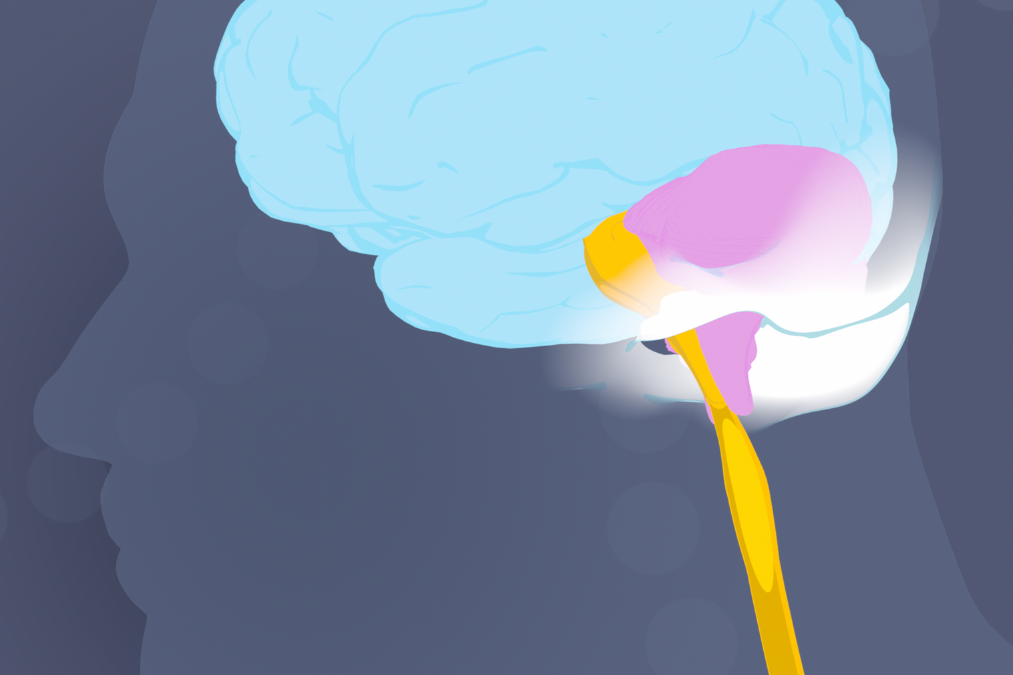What is Chiari Malformation?


So interestingly enough the Chiari malformation really wasn’t invented by Chiari and it’s not a malformation.
So it’s a bit of a misnomer but what it is is a hindbrain or back of the brain situation where the cerebellum tonsils which are part of the cerebellum that hangs down sinks below the foramen magnum which is the opening in the skull.
So as the brain stem becomes the spinal cord, it goes through a hole called the foramen magnum and that’s supposed to be all that goes to the foramen magnum but the tonsils can come down and crowd the brain stem in that hole.
That’s really what the Chiari malformation is.
So the most common thing that I see is patients come into the office with a known Chiari malformation because they had an MRI of either the brain or the cervical spine for something.
And it’s an incidental finding on that scan and the question is, the question the patient has for me is should be treated.
So for the most part, I don’t treat Chiari malformation surgically unless they’re accompanied by a syrinx and I’ll tell you what a syrinx is in a second but they can also be a cause of headaches and that’s where it gets really interesting.
Like all other headaches it’s really difficult to know where headaches are coming from so if a patient comes in with a Chiari malformation and headaches, it’s kind of a scratch your head situation and you wonder what is the success rate in treating the Chiari malformation to make the headaches better.
Now the syrinx is a different story.
The syrinx is a dilation of the spinal cord.
If there’s crowding at the foramen magnum as I described before, that can compress the junction of the brain stem and spinal cord and prevent that fluid from going up the spinal cord and that creates a dilation in the spinal cord in the syrinx.
Now when a Chiari malformation is associated with the syrinx, then I really strongly consider surgical treatment.
So there’s lots of different ways to surgically treat a Chiari malformation but all of them involve in one way or another making more room so that that area where the tonsils and the brain stem and spinal cord are all kind of squeezed together in the foramen magnum, you want to make that larger.
When you have associated syrinx with the Chiari malformation, the syrinx can produce symptoms.
These are often symptoms of spinal cord dysfunction so, difficulty using the limbs, arms and legs, hyperreflexia increased reflexes, sensory abnormalities.
Those are the main things that the syrinx presents with.
It’s a little bit more common in women than men and it’s typically something that becomes manifest in teenage years or early adults.
But as I said, most of the patients that I see are probably asymptomatic.
It’s just an incidental finding seen on an MRI done for something else.
What happens if you don’t treat it?
What I typically see is stability.
So, patients have symptoms that remain stable and if you correct the Chiari malformation in the way I described earlier, the symptoms will either stay the same or get a little bit better.
The way I present it to patients if it’s headaches is the main complaint.
After explaining it, most patients opt not to have the surgery.
When it’s a syrinx and there are actually neurologic issues, most patients do opt for the surgery.
It’s an infrequent thing to see and the vast majority of people that I see, I just follow.
I’m not convinced enough that their symptoms are related or will predictably get better with the surgery and so I follow them and that’s been a pretty successful ordeal.
Very very few people that I’ve followed, have gone on to ultimately become more symptomatic and opt for surgery.